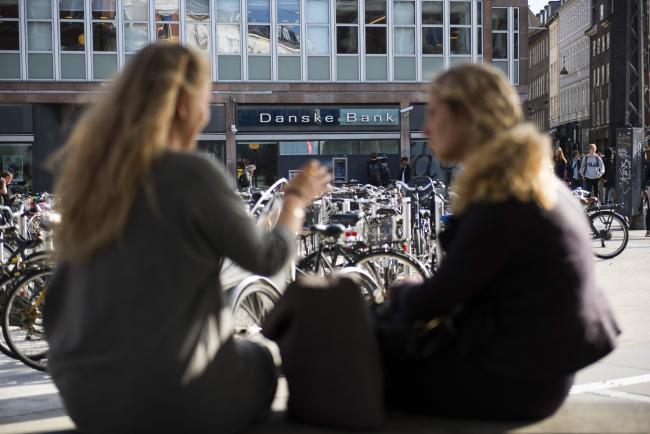(Bloomberg) -- Danske Bank A/S (CO:DANSKE) is pushing back against risks that Denmark’s financial supervisor will halt share buybacks after reopening an investigation into the laundering of billions of dollars in dirty money.
Denmark’s biggest bank plans to continue with its 10 billion-krone ($1.6 billion) buyback program, Morten Mosegaard, interim chief financial officer, said on Monday.
“We have no intention of calling that off,” Mosegaard said. “The money has already been deducted from our capital position at this point.”
Jesper Berg, the head of the Danish Financial Supervisory Authority, reopened an investigation into Danske last week, after the lender admitted that a large share of about $235 billion that flowed through an Estonian unit between 2007 and 2015 may have been laundered.
He says the FSA is considering all its options in connection with the investigation. A halt to share buybacks would only happen in the case of "material issues" with capital planning. He said Danske is well capitalized. Companies need FSA approval before initiating buyback programs.
Ramifications for Danske’s credit ratings
Since Danske released the results of its internal investigation on Sept. 19, ratings companies have cut their assessments.
- S&P says that over the next 18 to 24 months it could lower the bank’s issuer credit rating if fines weaken the bank’s capital or eat into earnings, or the scandal otherwise causes “lasting damage.” It lowered the bank’s stand-alone rating and that of its pension unit, as well as that of its hybrid debt
- Moody’s changed its outlook to negative from stable, and says a reversal would depend on evidence that the Estonian case hasn’t had a “material negative impact”
- DBRS warned that a substantial fine could lead to a ratings downgrade; the ratings company had already cut Danske’s trend rating in July, to stable from positive, citing laundering investigations
- Fitch cut Danske’s outlook to negative from stable, pointing to the potential impact on the bank’s capital, franchise and funding profile from the scandal
Questions Raised
Danske is two-thirds of the way through its current buyback program, which was announced in February and is due to run into early 2019. As of Sept. 24, the bank had bought 31.8 million shares with a gross value of 6.6 billion kroner.
Questions around the feasibility of continuing the share buyback program repeatedly arose during a conference call with Danske’s management on Sept. 19. That was the day the bank released its internal report on the laundering scandal and announced the departure of Chief Executive Officer Thomas Borgen.
The FSA has already forced Danske to add almost $800 million to its capital burden, in connection with the laundering case. The Danish government says the bank may face a fine as high as $630 million in Denmark alone, while other countries are also looking into the scandal, including the U.S. and the U.K. Danske may face total fines as high as $1.7 billion, according to Handelsbanken.
For now, the bank hasn’t made any provisions to cover such penalties. Management says the roughly 1.5 billion kroner it earned at the Estonian unit at the center of the scandal has been earmarked for a “donation” to society, though no clear recipient has yet been identified.
The key question is whether the U.S. might weigh in, in which case the risk of hefty fines grows considerably. Danske said last week that it’s reviewed 15,000 customers against sanctions lists and has so far found no violations. But the bank hasn’t completed its review of non-resident customers at the Estonian branch, including matching them against suspicious counterparties. The probe got through 6,200 named customers and still has 8,800 to go.
That figure doesn’t include the beneficial owners of U.K. shell companies and the end clients of so-called intermediaries in Russia and former Soviet republics, whose names Danske routinely failed to record, according to its own report. These intermediaries were “unregulated and represented unknown end-customers,” the report said.
“The interesting thing is: who is behind the shell companies?” said Andreas Hakansson, an analyst at Exane BNP Paribas (PA:BNPP). “Who is on the other side of the transactions? Who are the counterparties and who are the people behind the shell companies? That is still a major question which could determine how serious this is.”
Danske declined to comment on the question of sanctioned individuals or intermediaries.
“Last week we published a comprehensive report from the external law firm Bruun & Hjejle on the Estonian matter,” spokesman Kenni Leth said. “Due to ongoing investigations from the authorities, we are unable to comment on details of the report other than what have already been published or commented on at the investor call and the press conference.”
(Updates to credit ratings changes from sixth paragraph.)
